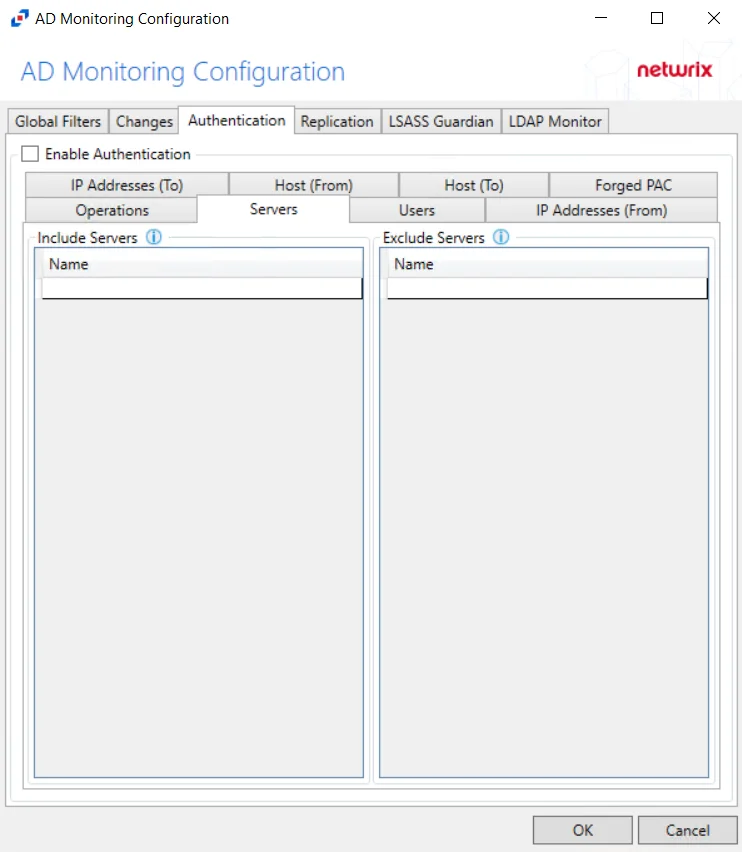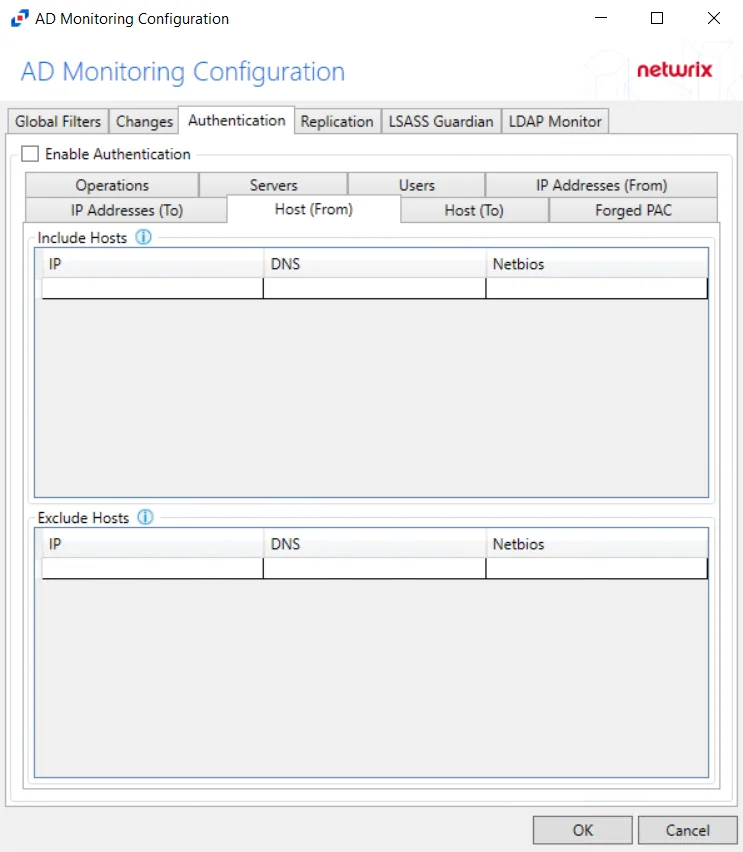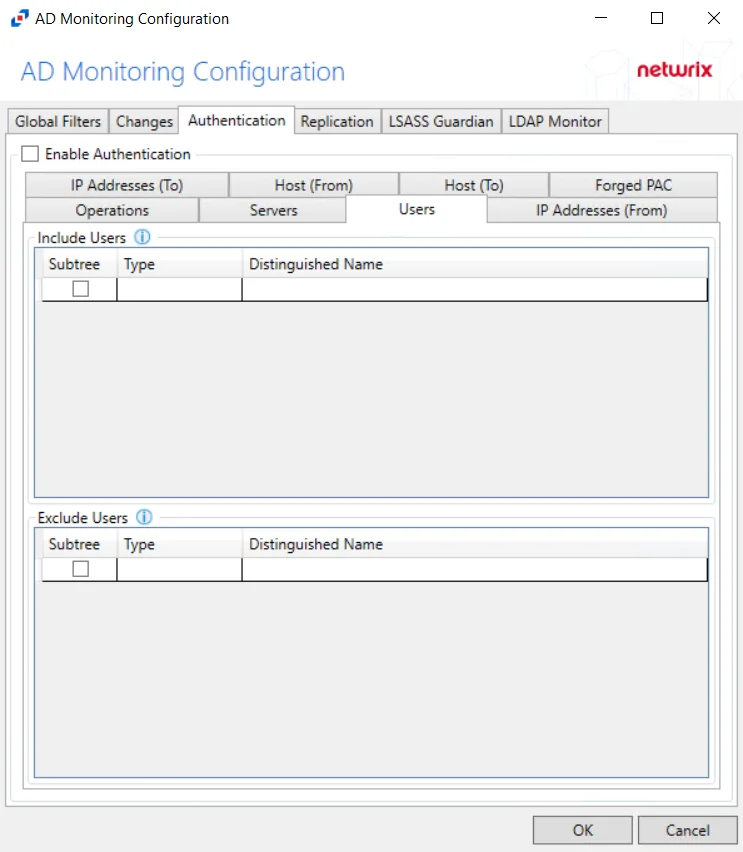Replication Tab
The Replication tab on a domain’s Configuration window monitors domain controller syncing and replication.

After checking the Enable Replication box, the following event filters can be modified on the sub-tabs:
- Host (From)
- Servers
- Users
Each filter tab acts like an “AND” statement for the filter. Any filter tab left blank is treated like an ALL for that filter set.
Windows cannot detect if a sync request is coming from a legitimate domain controller. This option is designed to monitor requests from computers that are not ‘excluded’ by the policy. Therefore, legitimate domain controllers should be identified in the event filters.
Host (From) Filter
The Hosts (From) option is where the policy can be scoped to only monitor specific hosts as originators of an authentication event or to exclude specific hosts from being monitored for authentication events.

Underneath each section, there are additional Host details:
- IP – Field must contain IP address, e.g. 123.456.7.890
- DNS – Field must contain a fully qualified domain name of the host, e.g. dc01.nwxtech.com
- Netbios – Field must contain NetBIOS name of the host, e.g. dc01
Double-click the textboxes within the column, then enter all three methods of identification for a host (IP Address, NETBIOS host name, or DNS host name) to include or exclude the originating host from replication event collection.
The Threat Manager DC Sync threat is sourced by the Activity Monitor's Replication AD monitoring configuration. It is necessary for it to be configured to exclude domain controllers on the Host (From) filter.
Servers Filter
The Servers option targets servers to be included or excluded when filtering for replication.

In both cases, servers must be specified in the form 'DOMAIN\SERVER', where DOMAIN is NetBIOS Domain name and SERVER is NetBIOS server name.
Double-click the text box beneath Name to enter the desired servers to include or exclude. Press the Enter or Tab key to add another text box.
Users Filter
The Users option is where the policy can be scoped to only monitor specific security principals committing changes within Active Directory or to exclude specific users committing changes from being monitored

The following details appear beneath both sections:
-
Subtree – If checked, the filter is applied to the parent and all child contexts. If unchecked, the filter is only applied to the listed context.
-
Type – Field must describe the type of the select Active Directory object and can have the following values:
- user – Indicates that selected object is user
- group – Indicates that selected object is group
- context – Indicates that selected object is container
- sidType – Indicates that selected object is well-known SID type
-
Distinguished Name – Field must be specified in the form of 'distinguishedName' attribute syntax, e.g. 'CN=Users,DC=Domain,DC=com'. However, for objects with 'sidType' type, it must be in the form of WellKnownSidType Enum, e.g. 'AnonymousSid' or 'LocalSid'.
Double-click the text box beneath Distinguished Name to enter the desired group types to include or exclude. Double-click the text box beneath Type to enter the desired AD object to include or exclude. Press the Enter or Tab key to add another textbox. Check the box under Subtree to include or exclude child contexts.